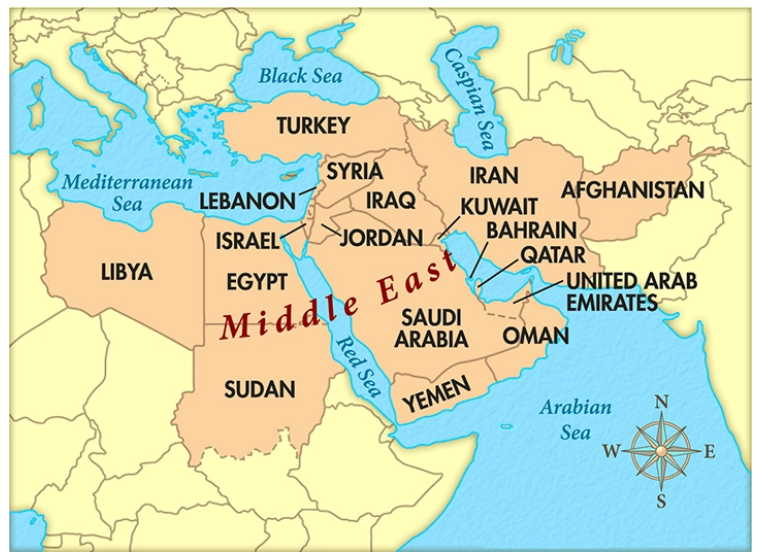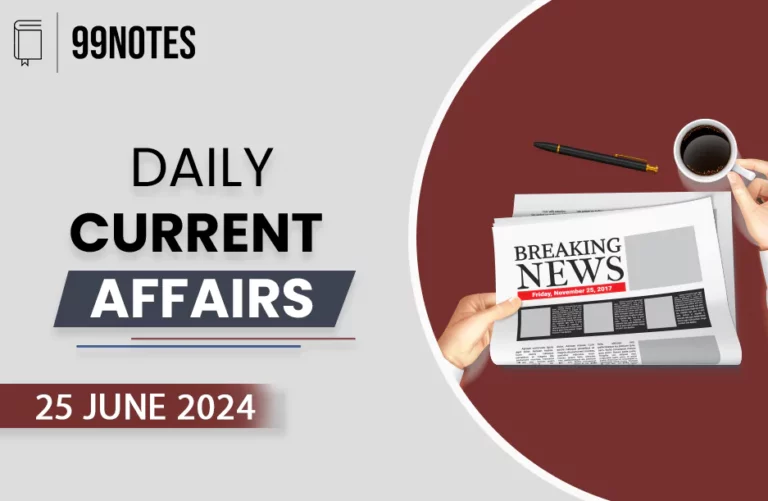8 October 2024 : Indian Express Editorial Analysis
1. Middle path in Middle East
(Source: Indian Express; Section: The Ideas Page; Page: 11)
| Topic: GS2- International Relations |
| Context: |
|

India’s Strategic Dilemma in the Middle East
- As tensions between Iran and Israel escalate, there are growing concerns about a broader regional conflict in the Middle East.
- India, with its deep ties to the Arab world, must carefully navigate these complexities, balancing its relationships with both Iran and Israel.
- Unfortunately, the current Indian discourse does not fully appreciate the concerns of Arab nations, despite India’s strong historical and economic ties with them.
- The Narendra Modi administration has elevated India’s engagement with the Arab world over the past decade, but a lack of public sensitivity to Arab perspectives on the Iran-Israel conflict stands in stark contrast to these efforts.
The Importance of India’s Ties with the Arab World
- India’s relationship with the Arab world holds much greater strategic value compared to its ties with Iran and Israel.
- With nearly 500 million people across 23 countries, the Arab world offers a large market for India in terms of trade, technology, and diplomacy.
- This region also plays a crucial role in India’s energy security, given its reliance on Arabian oil. Moreover, cultural and civilizational ties, religious connections, and the presence of a vast Indian diaspora further underscore the importance of India-Arab relations.
- Arabia’s promotion of moderate Islam could also positively influence domestic and regional politics in India’s neighborhood.
The Challenge of Balancing Relations with Iran
- India’s relationship with Iran is both ancient and geographically significant. Iran shares borders with Afghanistan and Pakistan, making it a key player in South Asian geopolitics.
- India has long seen Iran as a potential bridge to Central Asia, bypassing Pakistan’s roadblocks. Iran’s vast hydrocarbon reserves make it an energy powerhouse, and its political ambitions drive India’s diplomatic efforts to maintain a strong relationship.
- However, Iran’s strained relationship with the West, its revolutionary ideology, and its conflicts with Arab neighbors have complicated India’s efforts.
- Moreover, Iran’s support for Islamist groups has sometimes clashed with India’s interests.
India’s Growing Ties with Israel
- India normalized relations with Israel in the early 1990s, and this partnership has steadily grown, especially under the Modi government.
- Israel has become an important partner for India in defense, security, and technology. However, Israel’s harsh policies toward Gaza and the West Bank, combined with its reluctance to accommodate Palestinian statehood, have damaged its international standing, even among Western allies.
- Israel’s military response to recent terrorist attacks has further strained its relations in the region, and it risks isolating itself politically, despite its security gains.
Arab-Israeli Normalization and Iran’s Growing Influence
- The Abraham Accords of 2020, which normalized relations between several Gulf Arab states and Israel, were seen as a step toward resolving the region’s conflicts.
- However, these accords have not yet fulfilled their promise of advancing Palestinian statehood, despite efforts from the Biden administration. The ongoing hostility between Iran and Israel has further complicated the situation.
- While some Arab states have sought to normalize relations with Iran, Tehran’s support for armed militias and sectarian groups in the region continues to pose a significant challenge for the Gulf Cooperation Council (GCC) and prevents meaningful diplomatic progress.
India’s Role in the Middle East: The Need for Peace and Stability
- The structural and ideological differences between Arabia and Persia (Iran) are deep-rooted and unlikely to dissipate in the near future. While there has been some progress in Arab-Israeli relations, especially on the Palestinian question, a grand resolution remains elusive.
- India’s interests in the Middle East are tied to the region’s stability, and New Delhi must support peace efforts between Iran and Israel, as well as the normalization of Arab ties with both countries.
- A peaceful, economically integrated, and moderate Middle East is essential for India’s own prosperity and strategic interests in Central Asia, Africa, and Europe.
- As such, India must work closely with its Arab partners to prevent the outbreak of a full-scale regional war.
| What is the Significance of the Middle East for India? |
|
Energy Security and Trade Ties:
Counter-Terrorism Cooperation:
Diaspora and Remittance Flows:
Cultural and Civilizational Linkages:
Multilateral Engagement and Global Influence:
|
| PYQ: ‘India’s relations with Israel have, of late, acquired a depth and diversity, which cannot be rolled back.” Discuss. (150 words/10m) (UPSC CSE (M) GS-2 2018) |
| Practice Question: In the context of escalating tensions between Iran and Israel, analyze India’s strategic interests in the Middle East, particularly its ties with the Arab world, and the challenges it faces in balancing relations with key regional actors. (250 words/15 m) |
2. ON WAY TO CLIMATE RESILIENCE
(Source: Indian Express; Section: The Editorial Page; Page: 10)
| Topic: GS3 – Environment |
| Context: |
|
What is the Global Goal on Adaptation (GGA)?
- The GGA is a commitment within the Paris Agreement aiming to enhance adaptive capacity, strengthen resilience, and reduce vulnerability to climate change.
- The GGA focuses on having nations conduct comprehensive climate risk assessments, inform policy with these findings, and establish early warning systems by 2027.
The Urgency for Adaptation Strategies in the Face of Climate Impacts
- The global climate crisis is becoming more severe, with increasing climate-related disasters affecting all regions. The first global stocktake at COP28 revealed the uneven progress on climate adaptation across sectors and regions, underscoring the gaps in resilience-building and adaptation efforts.
- The Global Goal on Adaptation (GGA) aims to address these challenges by enhancing countries’ adaptive capacities, strengthening resilience, and reducing vulnerabilities to climate change.
- For developing countries like India, which are highly vulnerable to climate impacts, the GGA offers a crucial framework for planning and implementing climate adaptation strategies.
The UAE Framework and Its Key Targets for 2030
- The UAE’s Framework for Global Climate Resilience outlines a systematic approach to guide nations in assessing risks, creating country-specific adaptation plans, and implementing climate policies.
- Key targets for 2030 include reducing climate-induced water scarcity, achieving climate-resilient food production, and improving health services to address climate-related impacts.
- However, the success of these initiatives is hindered by the lack of “Means of Implementation” (MoI), such as financial support, technology transfer, and capacity-building mechanisms, which are essential for achieving these goals, especially in developing nations.
Adaptation Finance: A Critical Gap
- The 2023 Adaptation Gap Report reveals a significant shortfall in adaptation finance, currently estimated at $366 billion per year. The first global stocktake emphasized the need for increased ambition and financial support, particularly for adaptation projects.
- The June 2024 negotiations in Bonn highlighted the divergence between developed and developing countries, especially on MoI.
- Developing nations stressed the need for public finance, technology transfer, and capacity-building support from developed countries to bolster their climate adaptation efforts.
- Without these financial and technological resources, adaptation measures will remain insufficient to meet the growing challenges.
Challenges and Opportunities in Implementing the GGA
- The implementation of the GGA in developing countries like India presents both challenges and opportunities. The major challenge lies in the shortage of MoI, with developed countries failing to meet their climate finance obligations.
- The scale and speed of finance required necessitate a reformed institutional governance structure, alongside robust data systems and predictive models.
- However, successful implementation of the GGA could significantly enhance a country’s resilience to climate impacts.
- Additionally, private sector involvement and investments in adaptation strategies can boost economic growth by creating jobs, securing livelihoods, and protecting communities from climate shocks.
India’s Role and Challenges in Climate Adaptation
- India, like many developing nations, faces a range of climate-related challenges, including extreme weather events, rising sea levels, and agricultural instability, all of which threaten the livelihoods of millions.
- Through the GGA, India can strengthen its climate adaptation strategies, improving its capacity to protect its people and economy.
- India has consistently advocated for strong policy frameworks, capacity-building initiatives, and enhanced financial support from developed nations.
- Additionally, the development of indicators for measuring progress on GGA targets is essential for ensuring the success of adaptation efforts, and India’s active role in the UAE-Belem work programme reflects its commitment to this cause.
Strengthening Policy Frameworks for Effective Implementation
- For effective implementation of the GGA, it is critical to strengthen policy frameworks with clear guidelines for developing sustainable adaptation practices.
- Capacity building is equally important, as government officials, community leaders, and other stakeholders need to develop the expertise to implement climate adaptation strategies effectively.
- India and other developing nations must also explore innovative financing mechanisms and advocate for the transfer of finance and climate-resilient technologies from developed countries.
- Domestic sources of funding, combined with international support, are vital for ensuring long-term climate resilience.
The Road Ahead: Global Collaboration and Negotiations
- The June 2024 negotiations demonstrated the need for greater collaboration between developed and developing nations on climate finance and adaptation measures.
- While there was consensus on the modalities of the GGA work programme, significant tensions around financial commitments remain.
- The upcoming COP29 negotiations in Baku will be crucial in addressing these unresolved issues and ensuring that adaptation finance and technology transfers are scaled up to meet the demands of developing countries.
India’s Commitment to a Resilient Future
- India’s commitment to the GGA and its active participation in international climate negotiations underline its dedication to building a sustainable and resilient future.
- Despite the challenges posed by limited financial resources and the need for stronger international cooperation, India remains focused on advancing its climate adaptation strategies.
- With collaborative efforts, robust policies, and sustained financial support, a resilient future for India and other vulnerable nations is achievable.
| PYQ: Describe the major outcomes of the 26th session of the Conference of the Parties (COP) to the United Nations Framework Convention on Climate Change (UNFCCC). What are the commitments made by India in this conference? (250 words/15m) (UPSC CSE (M) GS-3 2021) |
| Practice Question: The 2023 Global Stocktake highlighted significant gaps in climate adaptation across regions and sectors. In this context, critically examine the challenges faced by developing countries in implementing climate adaptation strategies, with a focus on the role of international climate finance and technology transfer. (250 words/15 m) |





